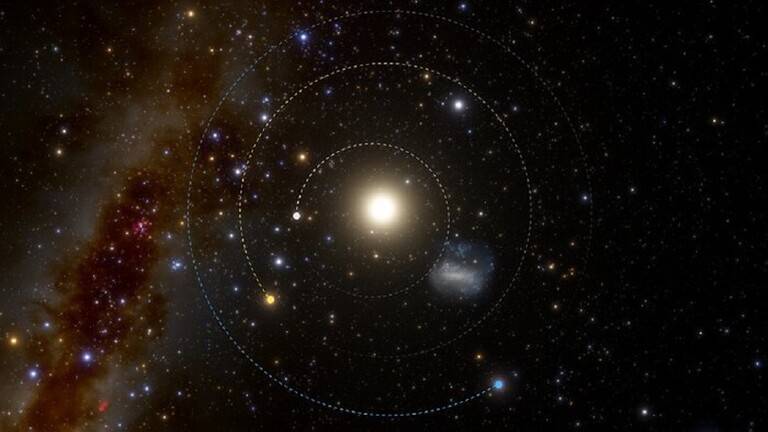Astronomers have discovered an asteroid with the shortest known orbit to date, a space rock that travels 12 million miles from the sun every 113 days. This asteroid, known as 2021 PH27 and measuring 3,280 feet in diameter, was discovered on August 13 by Scott Sheppard from the Carnegie Institution for Science using data from the Dark Energy Camera (DECam) in Chile.
Although asteroid 2021 PH27 completes its orbit around the sun in 113 days—much more than Mercury's 88 days—it has an extremely tilted elliptical orbit that defines the path of any stellar body closest to our star. In fact, this asteroid is very close to the sun; it "experiences the largest general relativistic effects of any known body in the solar system," according to a statement from the National Optical Astronomy Observatory (NOIRLab) under the U.S. National Science Foundation.
Sheppard added that due to its proximity to the sun, the surface temperature of 2021 PH27 reaches around 500 degrees Celsius (approximately 900 degrees Fahrenheit) at its closest approach (about 20 million kilometers from the sun), which is hot enough to melt lead. Ian Dell'Antonio and Shane Ming Fu from Brown University captured images of the space rock. The asteroid 2021 PH27 was observed again on August 14 and August 15 by separate astronomers, confirming Sheppard's discovery.
Sheppard stated, "Although telescope time is incredibly precious for astronomers, the international nature and love of the unknown makes astronomers very willing to forego their own observations to pursue new and interesting discoveries like this."
In addition to being the fastest known asteroid orbiting the sun, the elliptical orbit of 2021 PH27 (typical for all planets and asteroids) crosses the orbits of both Mercury and Venus. At this stage, researchers are unclear about the origins of the space rock 2021 PH27, but they speculate that it may have started life in the main asteroid belt between Mars and Jupiter and was displaced by "gravitational perturbations from the inner planets."
The statement added that its high orbital inclination of 32 degrees suggests it may instead be an extinct comet from the outer solar system that was captured into a short-range orbit when passing near one of the terrestrial planets. Experts also believe that the orbit of 2021 PH27 is unstable, leaving it with two possible outcomes: either it will eventually collide with Mercury, Venus, or the sun "within a few million years," or it will be ejected from the inner solar system due to the gravitational influence of the inner planets.
Finding asteroids very close to the sun is challenging because the glare of the star obscures them. Some become extremely hot due to their proximity to the sun and disperse. Additionally, planetary gravitational forces can cause asteroids to break apart. However, none of these factors have affected 2021 PH27 so far.
Sheppard explained, "The ratio of the inner asteroids of Earth and Venus compared to the outer ones will give us insight into the strength and components of these bodies." He noted that this discovery will help complete a census of asteroids that could potentially impact Earth.
The space rock has now entered a solar conjunction phase, where it will be behind the sun from Earth’s perspective. It will not be visible again until early 2022. Further observations are planned to determine its precise orbit.




